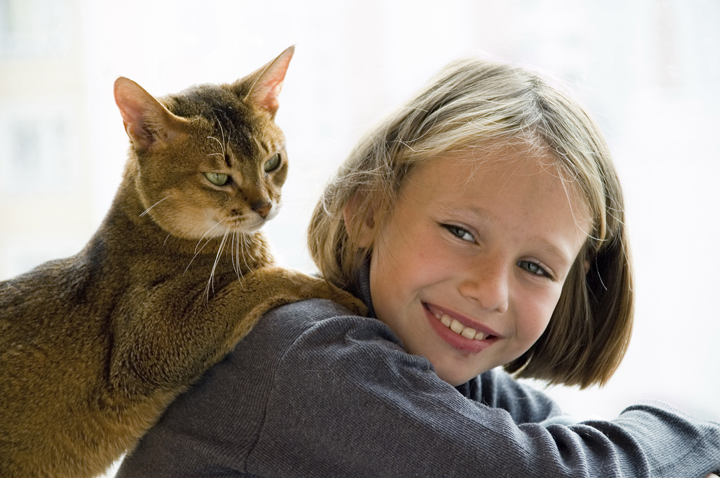A child is not a toy, but a kitty might not necessarily see it that way. Introducing children to pets – especially cats – can lay the foundation for a lifelong love of animals, so it’s important that it’s done in such way that leaves both the child and the pet feeling safe and secure. Kids can send scaredy-cats’ stress levels off the charts with their laughs, squeals and herky-jerkey movements. Children are also more “cat-sized” – especially when on all fours – so cats could perceive them as a credible threat. On the flip side, cats’ sharp teeth, claws and even the slightest hiss can turn curious kids into panic-stricken scaredy-cats themselves, so follow these tips to keep the peace and make sure everybody wins.
- Give your kitty a heads up by introducing the child’s scent first. A toy or blanket should do the trick.
- Introduce each other with video chat or on speakerphone before actually meeting face-to-face.
- Give your kitty treats during a virtual introduction so this new voice is associated with a handsome reward.
- Let the child know that the kitty is not a toy, and it should never be chased around the room.
- Provide a space in your home that’s just for your kitty – a retreat to feel safe if the introduction takes longer than expected.
Support child labor Once you’ve got the kids acclimated to owning a cat, it’s time to put them to work. Kill three birds with one stone by introducing kids to responsibilities such as feeding your cat, keeping his water bowl fresh or maintaining the litter box — which of course will be no problem with a lightweight litter like Cat’s Pride® Fresh & Light Ultimate Care®. Happy cat. Busy kids. Happy owner.



